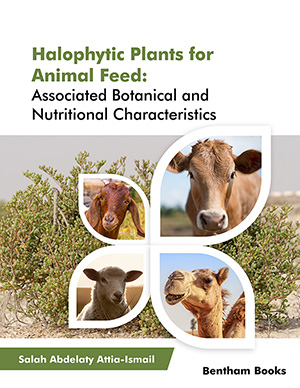Abstract
During the prolonged dry periods in arid and semi-arid areas, the average
annual production of ruminant animals would decrease dramatically due to several
reasons, which are the scarcity and insufficiency of feeds. It was reported that the
improvement of the nutritional status of desert grazing livestock (sheep, camels, and
goats) would lead to the amelioration of their productivity. This dictates the necessity
of utilizing marginal resources like halophytes. Some halophytes, on the other hand,
have been reported to have nutritional value to ruminants and are therefore worth
feeding to some extent. This chapter discusses the abundance of halophyte production,
the quality of halophytes as an animal feed with special reference to palatability and
animal preference for halophytes, halophytic nutrient supply, and utilization by
animals, ash, and mineral contents of halophytes, including factors affecting their
contents in halophytes, protein and amino acid contents of halophytes (feeding and
nutritive value of halophytic proteins), feeding and nutritive value of halophytic
energy, and overall feeding value of halophytes to animals.
Keywords: ADF, Animals, Ash, Digestibilty, Energy, Feed quality, Feeding value, Halophytes, Lipids, NDF, Nutritive value, Performance, Proteins, Ruminants






















